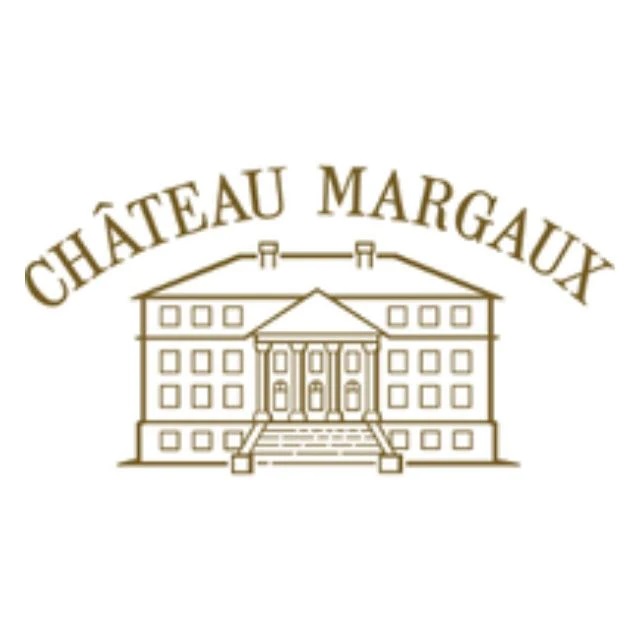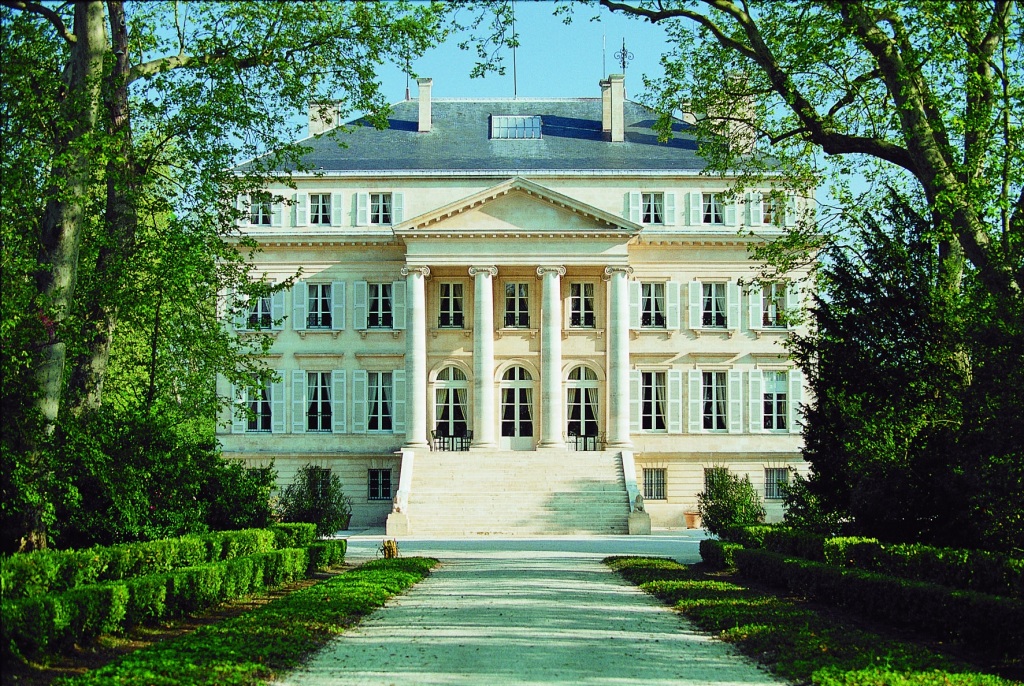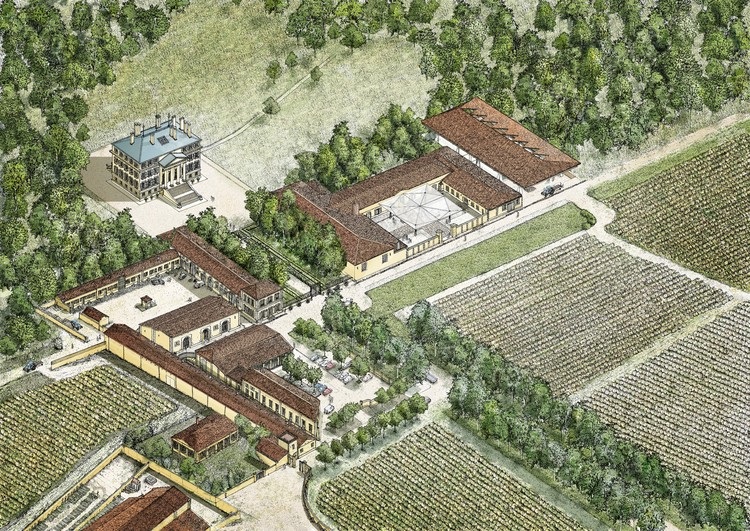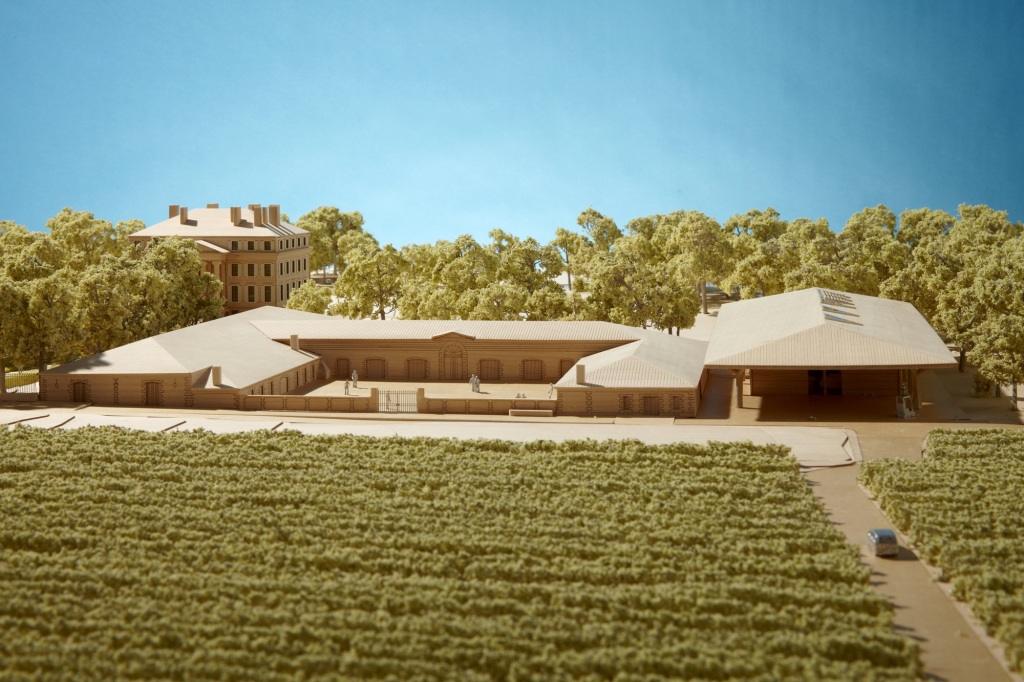
It’s difficult to sumarized in a few lines, the long and passionate history of the estate, it could be entitled “Once upon a time Château Margaux”.
Known since the XII century as “La Mothe de Margaux” (the Margaux mound) and, at that time, it didn’t have any vines. The old name didn’t happen by chance; in a flat region like the Médoc, the slightest “mound” was easily distinguished and the greatest wines are always produced on sloping land that ensures good drainage.
In 1152, Aquitaine fell to the advance of England until 1453 and so Bordeaux wines benefited from this new market. Bordeaux “claret” was adopted as a table wine by Richard the Lion Heart, King of England in the XII century.
The successive owners of “La Mothe de Margaux” were, of course, important lords but we had to wait for the arrival of the Lestonnac family to set up the estate as we know it today. Pierre de Lestonnac succeeded, in the ten years from 1572 to 1582, in completely restructuring the property as well as the vineyard and anticipated the general evolution of the Médoc that had started to abandon cereal growing in favor of vines.
At the end of the XVII century, Château Margaux occupied 265 hectares, land that wouldn’t be divided again. A third of the estate was dedicated to vines, which is still the case today.
England and Holland drank “claret”, a pale wine that didn’t age well. Château Margaux became the epitome for the art of wine-making and the hierarchy between the different Bordeaux growths was already being drawn up.

Through the generations and through the centuries, the skillfulness of one and the innovations of others, progressively made Château Margaux into a wine of excellence; we only have to remember the progress made by Berlon at the very beginning of the XVIII century.
Berlon was the first to vinify the red grapes and the white grapes separately. At that time, the vine stocks were mixed in the vineyard. He demanded that the grapes should not be harvested at dawn “because the grapes were covered in dew and that, if they were harvested in the morning, their colors was diluted and paled with excess humidity”. The beginnings of modern vinification were appearing.
Berlon equally understood the importance of the soil. He already knew the best plots. The influence of the terroir was emerging…
The permanence of these viticulture sites is only equaled by the genius of men, owners, managers, winegrowers and cellar masters who have known how to foresee and emphasized the exceptional nature of the terroirs.
In 1705, the London Gazette advertised the first auction of great Bordeaux growths: 230 barrels of “Margose” ! The 1771 vintage was the first “claret” to appear in a Christie’s catalogue.
The English Prime Minister, Sir Robert Walpole, is an example of the predilection of the English elite for these Bordeaux first growths; he bought four casks of Margaux per quarter that he practically never paid for!
The renown of the “first growths” crossed the Atlantic and Thomas Jefferson, United States Ambassador to France, depicted the hierarchy that already reigned among the best Bordeaux wines, with Château Margau (sic!) in first place. He placed an order for Margaux 1784 on which he wrote “There couldn’t be a better Bordeaux bottle”.
The beginning of the XVIII century marked the expansion of the Great Bordeaux wines and their still informal classifications. That wouldn’t have been possible without the pre-existence, then the permanence, of the notion of a growth, that is to say, a terroir, its wine, its château. Joseph de Fumel, owner in the middle of the XVIII century, planted the “varieties of choice” on the best plots. He realized that only the gravelly areas that are found in the Médoc and in the greatest crus could produce quality wines. The French revolution put an end to this golden Bordeaux century. Elie du Barry, Count of Hargicourt and lord of Margaux, was taken to the scaffold during the Jacobin terror.
Château Margaux – its vines, its woods, its hawthorn forests, its meadows and its mills – was sold at auction by the revolutionaries as a national possession. Laure de Fumel, the last descendant of the Lestonnac, the Pontac, and the Aulède families, all related to one another and who had all looked after Château Margaux so well for three centuries, proceeded to buy back the estate from citizen “Miqueau” who had left it to dilapidate completely, even letting the orange trees freeze!
The years of the revolution got the better of her courage and her passion for her land and she put it up for auction in 1801.
Bertrand Douat, Marquis de la Colonilla, acquired the estate and judged the manor house not to be worthy of the renown of his vineyard. In its place, he built the property that we so appreciate today.
Bertrand Douat was a Basque who returned from Spain with a considerable fortune and title. He had been, amongst other things, a ship owner and an authorized Spanish government agent for the negotiation of an exchange agreement with Russia! He was more than fifty when he returned to France; he lived in Paris rather than Bordeaux. In reality he wasn’t really interested in the Château Margaux vineyard and, for him, it was only a means of consolidating his rise in society.
It was in 1810, when La Colonilla was already seventy years old, that the work on the château and the farm buildings that we admire today, started. La Colonilla died in 1816 without having ever lived in his château.
La Colonilla, wasn’t the only owner of Château Margaux, both a stranger to Bordeaux and the vineyard, to leave so deep an imprint.
For the building of the château, La Colonilla approached Louis Combes, a fashionable Bordeaux architect. At Margaux, Combes realized his work of art. Often nicknamed the “Versailles of the Médoc” the château is a rare example of the neo-palladian style in France.
But Margaux isn’t just a refined, aristocratic, dwelling-house, it’s primarily, and especially, a farm. The genius of Combes was to be able to create a true small city of viticulture arranging, on both sides of the château, the buildings necessary for the production of one of the best wines in the world.
On one side, the tradesmen’s yard, with its houses and workshops, where the trades of plumber and mechanics are notably practiced ; the distance from Bordeaux made this necessary. At the beginning of the XVIII century, it was a good day’s journey.
On the other side, the cellars, the vat room and the cooperage. The large cellar, with its majestic perspectives and its tall white columns, evokes the spectacular image of a wine cathedral.
This is a complex that, progressively, visitors from all over the world are discovering when they arrive through the long avenue of one hundred-year-old plane trees that mark the entrance to the estate. It is one of superb and unique coherence.
This is a complex that, progressively, visitors from all over the world are discovering when they arrive through the long avenue of one hundred-year-old plane trees that mark the entrance to the estate. It is one of superb and unique coherence.
La Colonilla’s children weren’t interested in the estate and they sold it to Alexandre Aguado. Alexandre Aguado was the first banker to acquire a great Bordeaux château. His fortune was already immense and Château Margaux didn’t represent to him a chance to increase his fortune but rather an elegant property in which to live.
Aguado quite quickly abandoned his financial activities to become, amongst other things, the sponsor of Rossini, who would compose a zarzuela (a song) entitled…. “Château Margaux”!
He died rather young – in 1836 – having bequeathed his magnificent collection of Italian and Spanish pictures to the Louvre Museum. His essential legacy is the Napoleon III decoration, characteristic of this period, of which the main elements would remain in condition until the sale of the estate by the Ginestets to André Mentzelopoulos.
Empereur Napoléon III paid an important service to the great red wines of the Médoc by organising in Paris, in 1855, the Second Universal Exhibition. It was an occasion for him to glorify French products, among which were the prestigious Médoc wines.
He wanted the wines to be presented in the form of a classification. A blind tasting was organised in Paris which led to this official classification of 1855. It divided about sixty Médoc growths, and a property in the Graves, into five quality levels.
Four growths were classified “Premier Grand Cru Classé”; only Margaux was marked twenty out of twenty. This classification, which maintains its validity today, confirmed the qualitative hierarchy illustrated by the great price differences that had been practiced on the world market for a long time. In the XVIII century, the “first growths” were already being sold at twice the price of the “second growths”. Moreover, the 1855 classification succeeded over other more informal classification attempts like that of Thomas Jefferson in the XVIII century. Under the Second Empire, there’s little to say other than Bordeaux experienced a truly golden age, thanks to the building of a railway to Paris, but also thanks to the rapid expansion of commerce, facilitated by the agreements of free exchange inspired by the liberal ideas of the Emperor. It’s certain that Napoléon III had a lot to do with the upturn of Bordeaux viticulture.

In 1879, Emily Macdonnel, Scottish lady in waiting to Empress Eugenie and wife of Aguado’s son, sold the château to Count Pillet-Will. It was a difficult period for the Médoc, which was almost simultaneously struck by a great world recession and the incidence of cryptogamic soil diseases.
The joys and unhappiness of the XIX century contrast with the permanence of the vineyard that had been remarkably well-maintained by successive managers. However, a devastating calamity for the vines was appearing in the form of fungus, powdery mildew and later mildew. Powdery mildew is controlled by the use of sulphur and mildew by the spraying of copper sulphate, the famous “Bordeaux mixture”. Phylloxera, an insect that came from the United States, was a more terrible scourge and its propagation was unstoppable. It would have to wait for the solution of grafting the French varietals on to resistant American plants in order to save the Bordeaux vineyards.
The production of Château Margaux resumed when new treatments were found and replanting undertaken. The remarkable 1893 vintage was so abundant that they had to stop the harvest for six days because they didn’t have enough vats! Its production overtook that of the legendary 1870, the greatest year before the phylloxera.
Nevertheless, the young vines in the replantations weren’t able to produce grapes of optimal quality and part of the production was sold as “second wine”: that would be named the Pavillon Rouge du Château Margaux in 1908.
In 1896, Count Pillet-Will found someone he could trust in the person of Pierre Moreau who would play an essential rôle at the property by managing it and bringing together all the future shareholders in Château Margaux.
He nominated Marcellus Grangerou for the position of cellar master who would be succeeded by his son Marcel and his grandson, Jean.
Pierre Moreau’s most important innovation was the obligation to bottle the wine at the château, adopted in 1924, and was a real guarantee of authenticity for the buyers.
Fernand Ginestet and his son Pierre came on the scene. Fernand had made his fortune in wine trading. It was one of his friends, the Mayor of Saigon, and a wine importer who sent him the funds necessary to buy the estate. The Ginestet family acquired the whole property in about 1950.
Fernand and Pierre patiently reorganised the vineyard. Pierre’s son, Bernard, looked after their trading business and developed one of the most respected wine trade establishments in Bordeaux.
But the recession of the 1970s and the disastrous unsaleable vintages of 1972, 1973 and 1974 placed Pierre and Bernard in a desperate situation; nevertheless, they wanted to honour their commitments.
Their only negotiable asset was Château Margaux that they resigned themselves to selling. It took two years for Pierre and Bernard Ginestet to sell Château Margaux and when André Mentzelopoulos bought the property in 1977, the wine world was astounded. Whatever next? A Greek in the Médoc?
It was in 1977 that André Mentzelopoulos bought the property. The ionic columns that adorn the peristyle of the château reminded him of his native Greece and enabled him to grasp, thanks to his formidable intellectual acuity, the great volume of work required to bring Margaux back to first place, the only place that it was worthy of.
The exceptional life of this man is like a novel ! He was born in 1915 in Patras in the Peloponnese of a father who was a hotelier and who was adamant his children spoke several foreign languages so that they could realize the dream of so many Greeks; to go abroad and make their fortunes!
André would fulfill his father’s expectations. After studying literature in Grenoble he went to the Far East, to Burma, China, India, and finally in Pakistan where he made his fortune importing and exporting cereals.
On his return to Europe, he married a French woman and, in 1958, he acquired the Félix Potin company, founded in 1844, that owned eighty local grocery stores. With this company, André created a modern distribution enterprise with 1600 points of sale located in prestigious buildings in Paris.
This man, his accent still melodious – he spoke six languages – and who liked to quote Winston Churchill, fell in love with his Château Margaux.
In 1977, André Mentzelopoulos was a pioneer. Bordeaux wines were just emerging from a serious economic and qualitative crisis; investors weren’t interested in classified growths and owners couldn’t afford to develop their land.
André Mentzelopoulos was proactive and invested heavily without any hope of immediate return in a subdued market. This was a number of years before the new Bordeaux golden age at the end of the XX century.
He took spectacular action, be it in the vineyard, the cellars or the château. He put in place the drainage, the replantation… Under the passionate supervision of Emile Peynaud, renowned oenologist, he reintroduced the Pavillon Rouge du Château Margaux by considerably increasing the selection, and he redefined the Pavillon Blanc du Château Margaux. He introduced ageing in new barrels and he planned the construction of the first large underground cellar in the region, a technical achievement. The château, registered as an historic monument since 1946, was restored under the supervision of the inspectors from France Historic Monuments and was patiently decorated by the celebrated Henri Samuel who created the XVIII French rooms at the Metropolitan Museum of Art.
In this way, André Mentzelopoulos orchestrated the reconstruction of the architectural and viticultural heritage of Château Margaux with the objective of enabling the terroir to once again demonstrate its fabulous qualities.
The 1978 vintage was immediately recognised as exceptional, proof of the efficiency and quantity of André Mentzelopoulos’s work.
He died in 1980, too early and too quickly to enjoy the renaissance of his Château Margaux.
The wine world that was so alarmed by the arrival of a “Hellene in the Médoc”, redoubled its concerns on the death of André Mentzelopoulos. This paradox is explained in reality by the fact that André Mentzelopoulos had convinced even the most pessimistic doubters by his energy and clear vision that, put into the service of his passion for Château Margaux, had, with almost spectacular speed, re-established the quality of the wine and the reputation of the estate.
His daughter, Corinne Mentzelopoulos, was immediately ready for the challenge. On the death of her father she was already established in the family group as management controller at Primistères, the company that manages the Félix Potin company. Surrounded by the team that her father had chosen, she followed the investment defined by the latter, so that Margaux was ready to take up another challenge, that of the extraordinary explosion in worldwide demand for Bordeaux wines from 1982. The Americans were the first to get enthusiastic for the classified first growths, quickly joined by the more traditional connoisseurs in Great Britain and Germany, followed by the Japanese, enthusiasts in Hong Kong or Singapore, the Russians, the Chinese, the Indians, the Brazilians….
The wines of Bordeaux, even though they’ve been appreciated for centuries, had never known such success; enthusiasts from all over the world came to visit, taste, compare and comment.
Bordeaux has been blessed with a succession of great vintages. At the same time, the Félix Potin company was transformed, the stores and the property were given up, and the group – from now on Exor – became the majority shareholder in Perrier at the time the world market leader for mineral water. So, Corinne Mentzelopoulos decided to find support in the development of a group which it seemed unwise to manage alone. At the beginning of the 1990s, Corinne Mentzelopoulos found an associate in the Agnelli family, then directed by Gianni Agnelli, the president of Fiat. This association lasted about ten years and, in 2003, when the Agnelli Group decided to dispose of the Château Margaux shares, Corinne Mentzelopoulos bought them immediately thereby becoming the only shareholder in the estate.
Château Margaux’s history and renown stem equally from the intrinsic genius of the place as from the contributions made by the various people who have served it for five centuries.
200 years ago, the Marquis de la Colonilla made his mark on the Estate through the construction, in honor of the wine, of a great architectural legacy inspired by Ancient Greece. The architect Louis Combes designed the Château’s peristyle as a tribute to the Parthenon – my father felt so much pride and joy at the sight of these Ionic columns which reminded him of his beloved Greece. Over 160 years later, my father in turn took the necessary steps to reclaim, in barely three years, the prestige that Château Margaux had lost during the long crisis that had struck Bordeaux’s wines.

At the beginning of the XXI century, Bordeaux wines are experiencing unprecedented success. The whole world seems to have their eyes riveted on Bordeaux, where the demand for these great wines never stops growing. This prosperity, as well as the rapid expansion of other regions in the world, has placed Château Margaux in a more competitive climate, and also allowed the underlining of its unique position: that of a First Growth classified in 1855, enjoying a terroir that has been shaped by the passing centuries.
But there is no room for it to rest on its laurels – it would be tedious to enumerate all the investments carried out in the property since 1977. It’s about being at the top of its inheritance, but never ceasing to question in order to improve and perfect that which can still be done, in acknowledgement of the heritage of Château Margaux.
The commercialization, in 2013, of a third wine in order to improve further the quality of our first and second wines, the numerous trials that have been carried out over the last ten years, by our Research and Development department, in particular the observation of the response of the vines and the wine to biodynamics, and the establishment of an authentication system for our bottles are all examples of recent progress, worthy of the history of Château Margaux whilst ceaselessly progressing so as never to disappoint the enthusiasts of the whole world.
